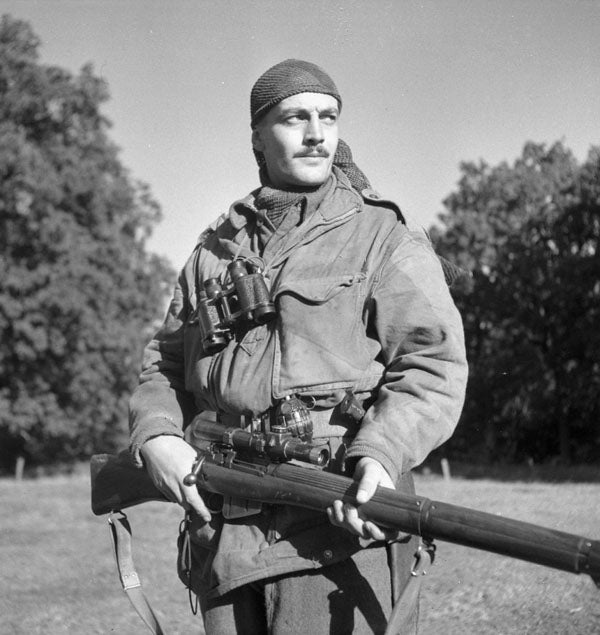Warm, windproof and often water-resistant, the over-the-head anorak (or smock, as they’re often known) is perhaps one of the most versatile outerwear innovations, worn everywhere from the Arctic tundra to the high sea.
Nowadays the terms ‘smock’ and ‘anorak’ are relatively interchangeable—usually used to describe hooded pullover jackets—but they both came from completely different sources. The original anoraks (or ‘anoraqs’, as they were known in Greenland) were an Inuit invention, made from caribou, wolf or seal skin and worn whilst hunting and fishing in the Arctic, whilst smocks were traditionally baggy cotton over-garments worn by shepherds during the 18th century.
In 1903 the legendary Norwegian explorer Roald Amundsen led the first successful expedition across Canada’s Northwest passage. During this arduous trip, Amundsen gained invaluable survival insight from the Netsilik Inuit people (who obviously knew a thing or two about keeping warm in the Arctic Circle), and took to using sled dogs to carry hefty equipment, and wearing loose-fitting fur anoraks made from wolfskin. These oversized anoraks allowed much more movement when compared with the heavy wool coats which were usually worn by Arctic explorers, whilst the built-in hood kept the draught out.

Building on this knowledge, Amundsen took the anorak to the South Pole, and during the Heroic Age of Antarctic Exploration throughout the early 20th century, the design was developed and refined, as teams experimented with fabrics and shape. During the successful 1911 expedition to the South Pole, Amundsen and his team wore a combination of fur anoraks and lighter, wind-proof gabardine smocks made by Burberry, whilst the team involved in Falcon Scott’s ill-fated Terra Nova expedition relied on layers of wool topped off with a similar Burberry smock.

Tested amongst the planet’s harshest conditions, the gear worn during this halcyon age of adventure provided a blueprint for much of the military and outdoor clothing of the 20th century, and when WW2 came around in 1939, an endless array of purpose-driven smocks were devised with specific needs in mind.
The German Knockensack, the British Denison smock and the Canadian para smock were all light cotton jackets worn by paratroopers to keep their equipment from snagging during parachute jumps, whilst the US Navy deck smock was a short denim utility jacket designed for work aboard an aircraft carrier. The Gunner Smock was a similar design, made of white cotton, which was made for gun turret crews and shipped over to Europe as emergency snow camo during the Battle of the Bulge. Slightly better prepared, both the Norwegian and Swedish militaries created full length snow smocks (as seen on Kirk Douglas in 1965’s Heroes of the Telemark).



Another notable WW2 smock was a rare 1943 US Army pullover parka intended for wet-weather wear. Not only did this seldom-seen beauty serve as the inspiration for the classic blue anorak worn by Rock Hudson in Ice Station Zebra, but it was the basis for the Nigel Cabourn X Liam Gallagher jackets last year.

After WW2, lightweight windproof smocks became a fixture in pretty much all factions of the outdoor world—from the extreme to the everyday. Whilst Edmund Hillary was trekking up Everest in a waterproof Ventile pullover, weekend warriors were sat in jackets they’d picked out of the LL Bean catalogue, casually toasting marshmallows. Just as every military division seemed to have its own version of the classic smock shape, so too did the emerging leisure activities of the day, with everything from skiing to sailing adding its own practical stamp on the design. Hiking anoraks featured pockets for maps and compasses, whilst sailing anoraks were made of highly-visible, quick-drying Bri-Nylon.

Due to the ultra-practical nature of these smocks, which were at odds with the paisley velvet excess of the late 60s, they eventually became seen as a symbol of anti-fashion, worn by hobbyists who cared more about what they were doing, then how they looked doing it—and the word ‘anorak’ became short-hand slang for anyone with a strong interest in a niche, often-unfashionable, subject.

First used in the ‘70s by pirate radio DJ Andy Archer to describe the jacket-clad off-shore radio obsessives who’d paddle out to visit the ships which broadcasted their favourite stations, the term quickly spread to include train-spotters, bird-watchers, and pretty much any obsessives who required the use of a practical raincoat.

With the outdoor clothing companies of the day placing function and utility above chintzy aesthetics, their anoraks also attracted the attention of those looking to set themselves apart from the sea of rayon shirts and shiny shoes—and during the 1980s a small but dedicated band of football fans took to wearing waterproof smocks along with flat-soled trainers and chunky cords. A similar thing happened across the pond, as brightly-coloured sailing jackets were re-appropriated on the streets of New York.

Today, over a century since Roald Amundsen first planted a Norwegian flag at the South Pole in an oversized over-the-head jacket inspired by the Netsilik Inuit, the anorak is still a dependable cold-weather option, ideal for keeping Jack Frost at arm’s length on frosty winter days.

This season Nigel Cabourn and his team have created the Mountain Smock and Track Smock. The Mountain Smock inspired by the British Antarctic Survey (BAS) during scientific trips around the Antarctic continent. And the Track Smock is a combination of a 1950s cold weather smock and a WW2 US Marine Jacket.


